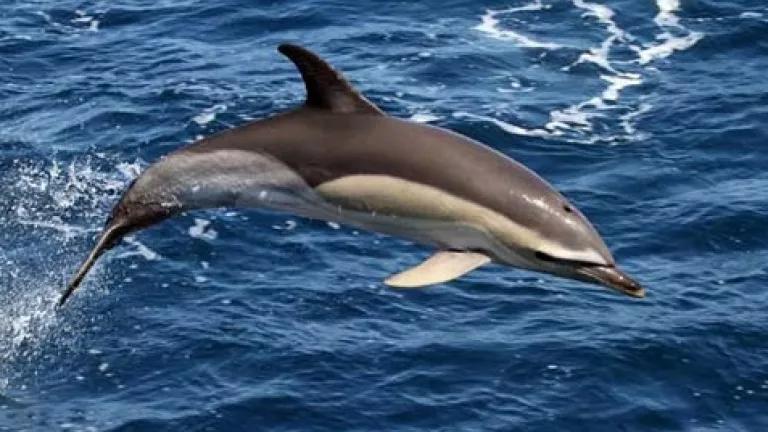This Week in Whales: Chronic Impacts from Sonar and other Sources Bad for Beaked Whales; World's Loneliest Whale Better Get Ready for its Closeup; Old-time Whaling Ship Restored

After a long hiatus, This Week in Whales is back! So, without further ado, here's your news in the world of whales this week (or close to it).
- This week saw the issuance of another important paper on chronic impacts from sonar (and other sources of disturbance) on beaked whales. The paper, Using Energetic Models to Investigate the Survival and Reproduction of Beaked Whales (family Ziphiidae), found evidence implying that man-made "disturbances that cause a consistent, minor reduction in energy intake over an extended period of time could potentially impact reproduction just as strongly as disturbances that comletely halt energy acquisition over a shorter period." That means that even so-called "minor" harassment from things like the Navy's ubiquitous use of sonar that cause beaked whales to abandon habitat for even short periods may negatively impact the ability of beaked whales to reproduce.
- Researchers investigating the death of a short-beaked common dolphin found stranded in San Diego, California, in 2010 have recently revealed that the dolphin died of tracheal bronchitis due to a mysterious new virus. They identified the new pathogen as belonging to the polyomavirus family--a highly unusual finding, because up until now such viruses have only been known to cause disease in birds. Scientists are still trying to discern the risk this discovery poses to dolphin populations.
- A team of filmmakers are producing a documentary about the "world's loneliest whale," which scientists have been following since the late '80s when they noticed its odd 52-Hz vocalizations (most other baleen whales vocalize between 17-18 Hz). While one researcher likens its unique vocalization to a sort of lisp or speech impediment that may not completely inhibit its communicative abilities, the image of a lonely whale communicating at a frequency no other whale could hear has struck a chord with the public. Scientists will hopefully learn more this fall when they head out with the documentary filmmakers to find the whale, which may be a fin or blue whale. Maybe they'll discover that the whale isn't lonely at all, just swimming to the beat of its own tune.
- The National Oceanic and Atmospheric Administration (NOAA) will decide any day now whether or not to take the North Pacific humpback whale off the Endangered Species List. If it delists the humpback whale, it might remove its "one hundred yard rule," which (although meager) is the only regulation in place to protect humpbacks from potential harrassment resulting from the booming whale-watching tour industry. In lifting the protective measure, NOAA may believe the whale-watching industry does "a pretty good job" of policing itself. Wasn't the oil and gas industry policing itself during the BP disaster in the Gulf of Mexico? I don't recall that working out so well.
- The Charles W. Morgan--a 172-year old wooden whaling ship--is ready to be relaunched after a $5 million, 7-year restoration effort. Historians used high-tech laser scanning and x-ray technology to make a 3D model of the ship and maintained fealty to its construction in 1841 by sourcing old-growth oak foraged from the wreckage of hurricanes like Katrina to complete the massive project. When fully operational, the ship should be able to kill more than 100 whales a year, supplying enough oil to light Colonial Williamsburg. Hey, hey, I'm kidding, calm down. The ship won't be doing any whaling. It's going to tour historic ports and will help "make 200 years of American maritime history come alive." If you want to see an operational whaling ship, book a trip to Japan or Iceland.
Meanwhile, this week in Wales...
Unfortunately, the week-long heatwave in Britain which is putting pressure on Accident & Emergency wards, causing wildfires, and melting roads may also be responsible for the death of 100 people in Wales, mostly the elderly. Let's hope the heatwave breaks soon.
Photo Credit: NOAA

